How to Grow Better Asparagus
A little hard work and a lot of patience will yield years of plentiful harvests
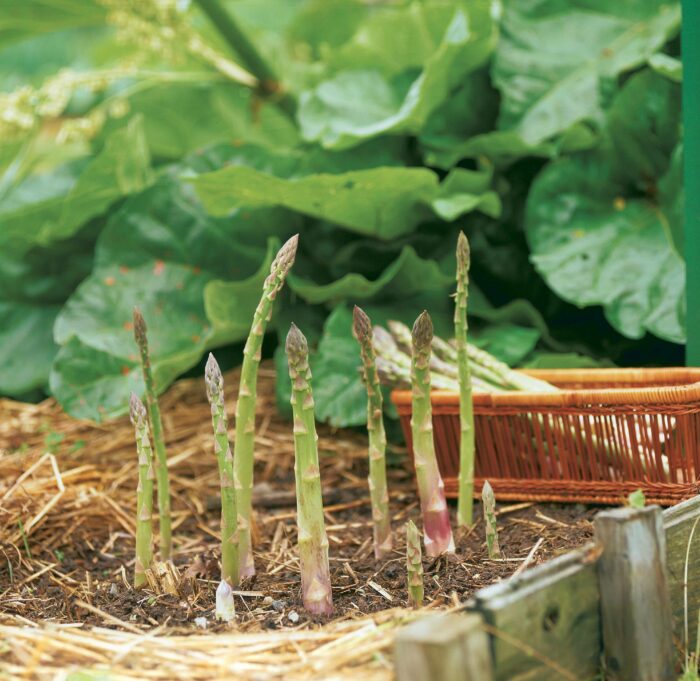
My family didn’t grow asparagus when I was a child. We found it. My dad had a sharp eye for the tender green spears that grew wild along roadsides near our home in Piqua, a wisp of a town in southeastern Kansas. He could spot even a single spear when he took the family on Sunday afternoon drives, stopping our Plymouth Fury to gather the crop.
I developed a passion for asparagus too; only now, though I fondly remember those asparagus hunts, I find it much easier to simply step out the back door of my house and snap a few delicious spears from the bed in our garden. When I first planted asparagus, I was a little intimidated by all the folks who said it was hard to grow. Starting a bed does take more work for asparagus than for many other vegetables. But after 15 years of experience, which includes 20 acres for commercial production, I know asparagus is one of the tastiest, easiest vegetables you can grow.
Tips to Get Your Asparagus Growing Strong From the Start
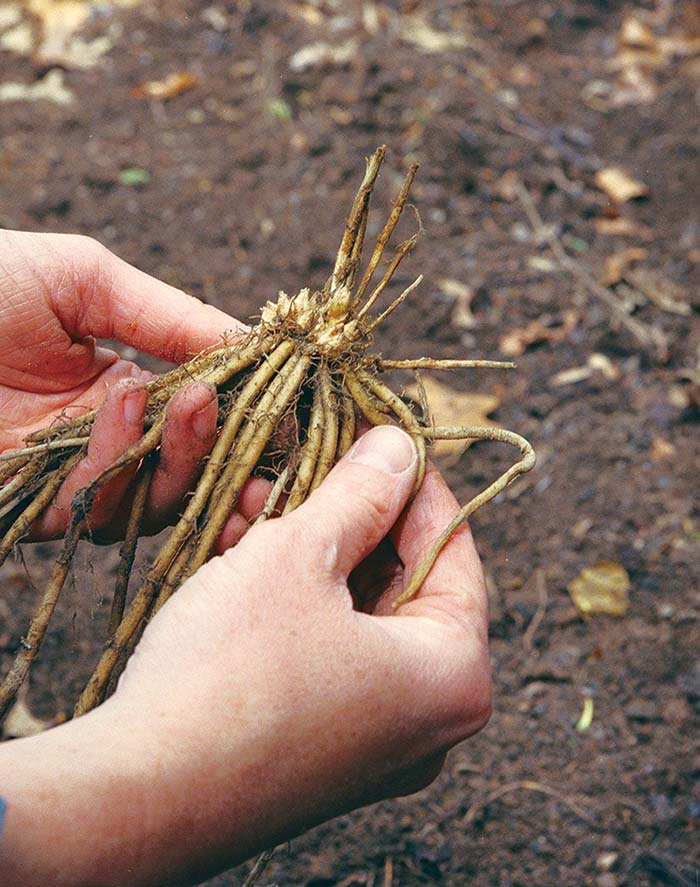
A productive asparagus crop is easy to grow if you do a little extra work upfront. Here are some planting tips that will ensure an abundant harvest.
1. Consider the weather when selecting a variety.
New hybrid asparagus varieties abound. The old standard, ‘Mary Washington’, has long been good, but research and breeding have produced some fine alternatives. California varieties like ‘U.C. 157’ tolerate the heat better and keep a nice, tight tip, even above 80°F. Breeders are also offering all-male plants, which yield more than female plants because they don’t use energy to produce flowers and seeds. These varieties, however, do not do well in hot climates.
2. Crowns provide the best start.
You can start your asparagus with seeds, but they take six weeks to germinate and add another year of growing time before the first harvest. So most people start with an asparagus crown consisting of a root mass and buds (photo right). When buying crowns, look for fresh, firm roots. If they are shriveled or feel like paper, they may be old and won’t produce well—if at all.
3. Plant them early.
Crowns should be planted while they are dormant. That can be as early as late winter. They should be planted when the ground is workable, between frosts. As long as the crowns are covered with about 2 inches of soil, they won’t suffer in hard freezes. They can be planted as late as midspring if plump, healthy roots are still available.
4. Dig a trench, and gradually fill.
A few crowns can be planted merely by digging individual holes for each plant. If you want to plant more, dig a trench. The optimal depth to plant crowns is 6 to 8 inches. Shallower plantings yield many spindly spears, while those planted deeper produce fewer spears of larger diameter. Place the crowns in the furrow, and cover initially with 2 to 3 inches of soil. Keep adding to the trench as the spears emerge. By season’s end, it should be filled. You can fill the trench completely at planting time, but doing it gradually helps control weeds.
5. Provide some breathing room.
Space the asparagus crowns so that you get as many plants as possible in a small area but still allow for good air circulation to protect against disease. I plant my crowns 15 to 18 inches apart in rows 5 feet apart. Figure out 10 plants for each person in the family who loves asparagus. This will enable you to harvest enough at one time for a meal.
Basics of Growing Asparagus
Soil and water needs
Asparagus is a perennial crop, with its long green fingers coming up year after year. When you make your bed, do it carefully—your asparagus may be growing in it for 20 years or more. A sunny, well-drained part of the garden will yield the best crop. Asparagus, a good candidate for raised beds, should be planted in soil with a pH of 6.5 to 7.5. I’m lucky my patch was once a cattle-feed lot, so I rarely add fertilizer, but people with poor soil may want to fertilize lightly. When you’ve established your asparagus bed, the hard part is finished. Still, you must follow good cultural practices to ensure successful crops.
Weeds must be controlled. This can be done with a hoe, cultivator, or rotary tiller. To avoid damaging the asparagus roots, don’t till deeper than 2 inches. Weed-blocking fabric and mulch will also help. Many gardeners use coarse salt to keep the weeds out. Asparagus tolerates salt, while most other plants don’t.
Except under near-desert conditions, asparagus, with its extensive root system, doesn’t need irrigation. I’ve learned that asparagus drowns much more quickly than it dies of thirst.
Pests and diseases to watch out for
Asparagus does, however, need to be protected from pests. The asparagus beetle can nibble on spears and lay dark eggs along the surface. Unless a lot of asparagus is grown in your area, this is mostly a mere nuisance. Just scrape off the eggs with your fingernail.
Fungal diseases, such as asparagus rust, which first appears as small, reddish-brown spots on stems, can be treated with fungicides. New hybrid varieties resist disease.

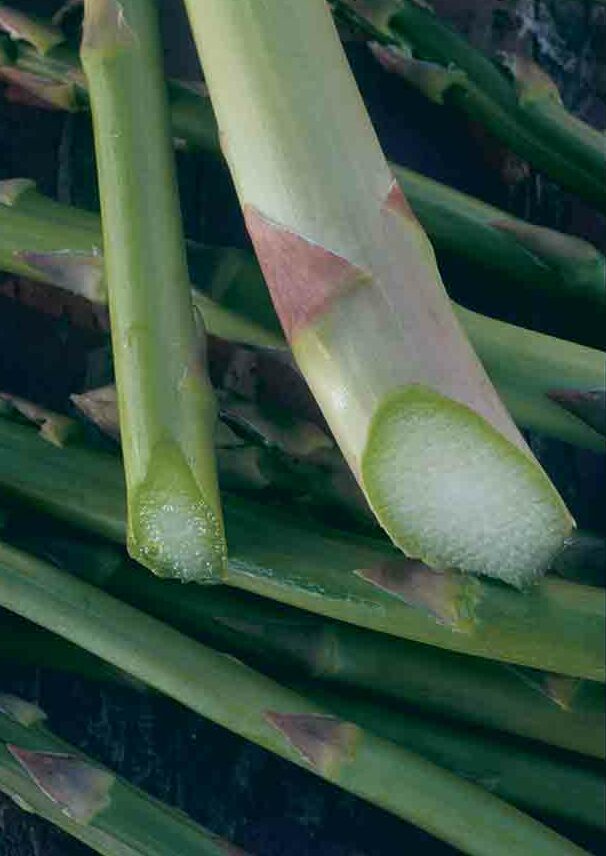
When to harvest asparagus
It takes time to grow accustomed to the asparagus harvest cycle. Although the harvest is about six weeks long, it’s over just when many people start thinking about local summer produce. The asparagus harvest in Kansas usually starts about the middle of April and runs until the first of June. Spear growth depends on temperature. If it’s cool, the asparagus may need to be harvested every three days, and if hot, every day.
Older varieties had to grow for three seasons before we could harvest them. With the increased vigor of new hybrid varieties, gardeners can harvest for about two weeks one year after planting. A light harvest seems to stimulate the plant to produce more spears. A full six-week harvest season may follow in year 2, provided the average size of the spears is larger than a pencil.
Harvesting is a snap. Spears should be harvested by hand when they are 6 to 8 inches tall and the tips are still tight.
How to harvest asparagus
I recommend snapping asparagus off at soil level. This severs the spear at the junction between the tender green tissue above the ground and the woody white tissue below. All of the stalks you get are edible, and you won’t injure spears that have not yet emerged. You can use a knife to cut the spears just below the surface, but be careful not to damage the developing spears and the crown.
Tips for storing homegrown asparagus
If you plan to store the asparagus for several days, leave some of the woody white base. It restricts water loss and helps preserve the upper spear.
How to keep asparagus plants growing year after year
Fern formation is critical to next year’s growth. The asparagus will keep growing throughout the summer. But difficult as it may be, you must stop harvesting so that some of the spears can go to the fern, the stage when the tips turn feathery.
Ferns should not be removed from asparagus plants until after several killing freezes. I often recommend leaving the tops for winter mulch. This mulch can catch snow and protect the plants from the severe cold while adding moisture. More important, however, living ferns transfer carbohydrates and energy to the roots by photosynthesis. This process is crucial to the development of spears for next year’s harvest.
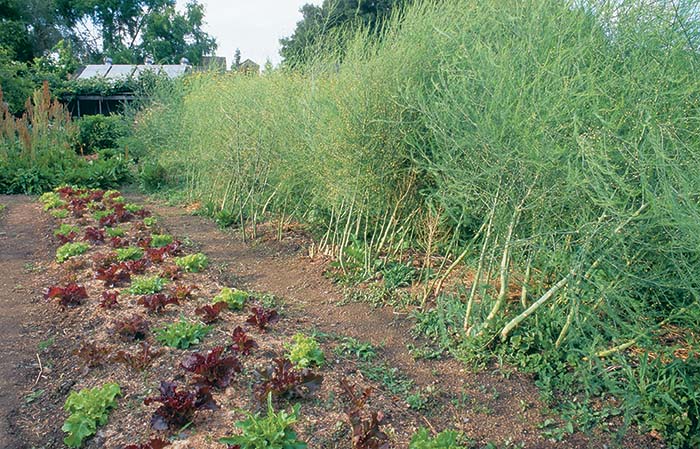
Key takeaways: Asparagus needs a good start
- Choose a sunny part of the garden with good drainage.
- Starting an asparagus crop with crowns rather than seeds tends to ensure more success.
- Dig a trench and check the pH, which should be 6.5 to 7.5.
- Plant the crowns about 8 inches deep and 15 inches apart.
- Cover initially with 2 inches of soil, and gradually fill the trench as the spears emerge.
Fine Gardening Recommended Products
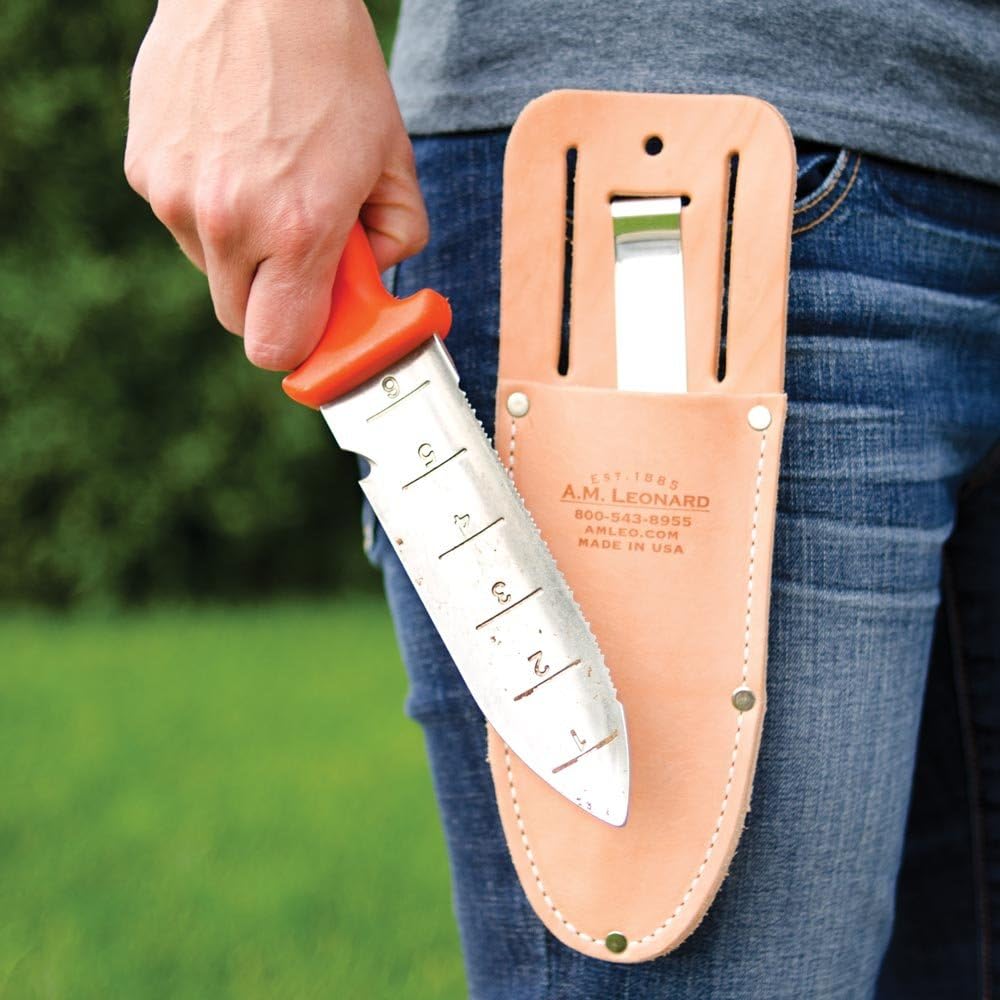
A.M. Leonard Deluxe Soil Knife & Leather Sheath Combo
Fine Gardening receives a commission for items purchased through links on this site, including Amazon Associates and other affiliate advertising programs.






Comments
Log in or create an account to post a comment.
Sign up Log in